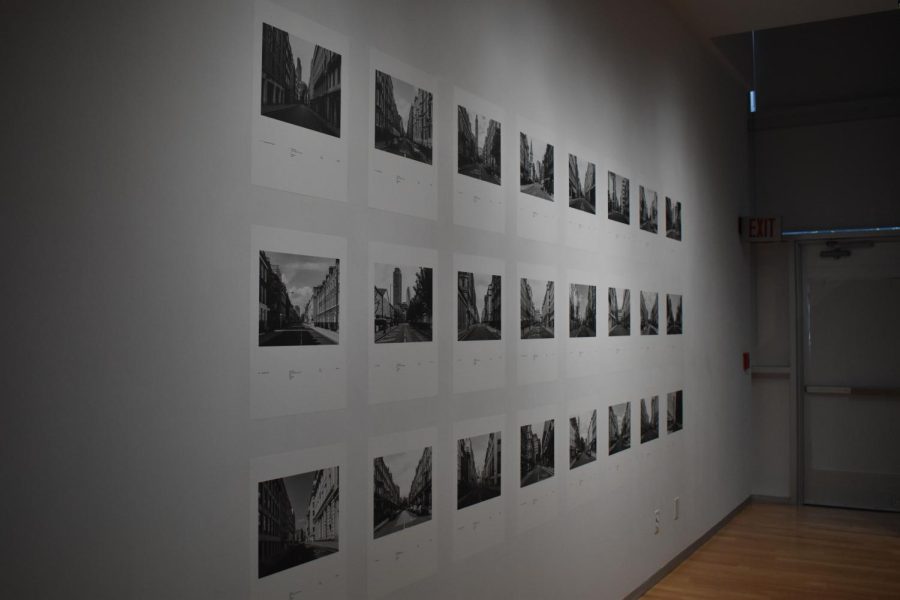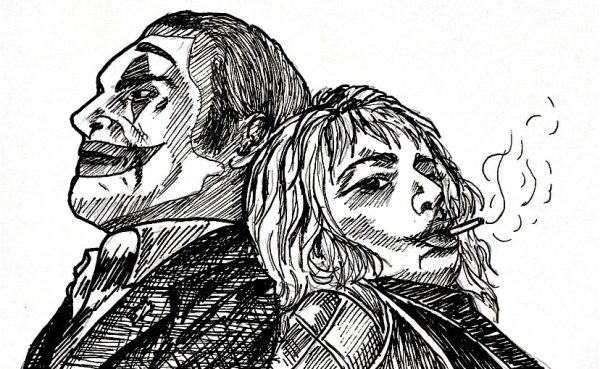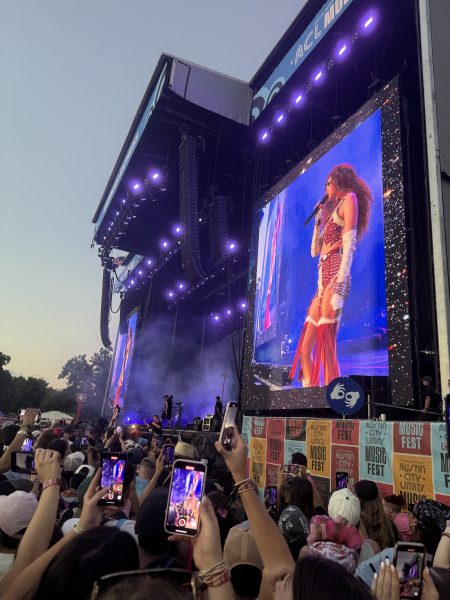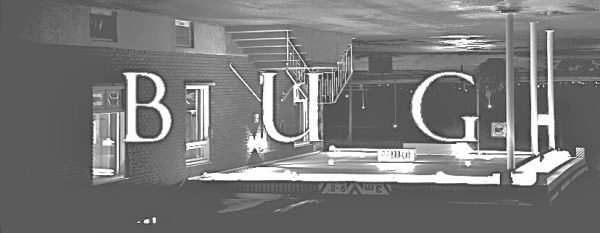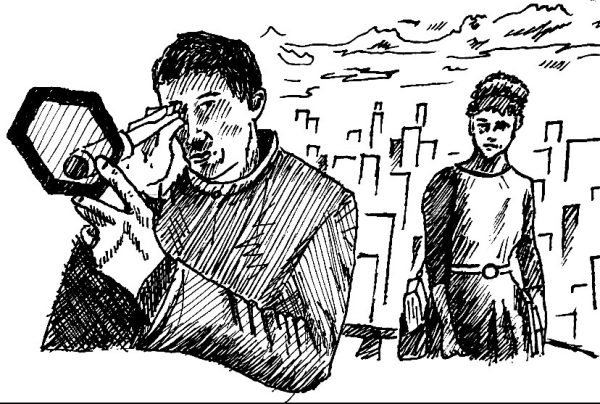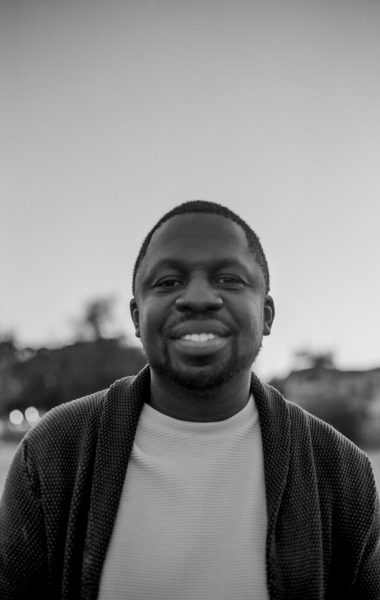Duncan Ganley opens his show at the Neidorff Art Gallery
The once empty gallery now filled with the “Inventory of Empty Streets”
Two weeks ago, British artist Duncan Ganley opened his show the “Inventory of Empty Streets” at the Neidorff Art Gallery in the Dicke-Smith Art Building. Duncan Ganley’s show consists of 3,143 images that place viewers in the streets of London in the lockdown era of the COVID-19 pandemic. Ganley debuted his show on Nov. 3, and the show will run until Dec. 10. The gallery is open weekly Tuesdays through Saturdays from 1-5 p.m. In his essay “Inventory of Empty Streets,” the artist describes how he uses photography to display stark contrasts between order and chaos, as well as reality and fiction. Ganley also connects his piece to his feelings at the time.
Ganley first brings his viewer back into the time of the pandemic, April-June 2020 in the UK, through a long-form video version of “Inventory of Empty Streets.” The video part of the exhibit projects all 3,143 images life-sized on a wall. When someone stands in front of this part of the show, they become a part of the exhibit. To represent a day, each image flashes on for 30 seconds, and it takes 26 hours to get through all of them. The film has no beginning or end, allowing people to reflect on how time became meaningless during the pandemic.
Another interactive part of the exhibit is Ganley’s map, which depicts all of the places where Ganley took photographs and the paths he took to get there. He did this by using a tracking app on his phone, which created the map that he uploaded to the exhibit, allowing viewers the option of walking his same path.
Ganley explores meaning and reality through another part of the exhibit, where two photographs are blown up and draped side by side. Ganley shot the diptych images of King Street in Covent Garden from the same position. The first was shot prior to the pandemic on Jan. 18, 2020, and then again during lockdown on April 12, 2020. The pre-pandemic image shows the area bustling with people. The lockdown image shows the same street empty and devoid of life. Compared to the first image, it seems more like a dystopian image than reality.
Another contrast the artist explores is uniformity and chaos. One piece includes 24 images tacked onto a wall in a grid formation. They hang uniformly, and all the images have the same horizon line and vanishing point. To Ganley, taking these images the same way made him feel a sense of control as if he was directing a movie and there were actors moving in and out of the shot.
“The images I was capturing took on a sense of this Ballardian hyper-reality — the forced one-point perspective, the flatness of the buildings and the space between them, the occasionally ‘extra,’ moving in or out of shot,” Ganley said.
Something else that depicted Ganley’s anxiety towards chaos was all the data that accompanied each photograph. One part of living through the lockdown was anxiously taking in all this data from the news every day.
At the exhibit, Ganley had books on display that contained all 3,143 images. Similar to the methodical data on the photographs, he chose to methodically separate the books by their location in Ganley’s arbitrary zones. He divided the Congestion Charge Zone (CCZ) of central London into 32 geographical zones. Ganley explained how the cataloging of this experience helped him to deal with his own anxiety at the time and gave him an escape.
“By mapping, walking, shooting, editing, classifying, de-aestheticizing the image — reducing it all to a mass of data — I was responding in my own emotional way. It was the means through which I attempted to remain mentally stable, trying to create my own visual, logical version of the world which seemed otherwise in chaos,” Ganley said.
When Jessica Halonen, art and art history professor and chair of the gallery committee, reflects on what Ganley’s photograph catalog of the pandemic in London makes her think of in terms of her experience of COVID, she does not point to the struggles. She points out how the UK’s lockdown, where they practiced strict stay-at-home guidelines and could only do things such as shop and exercise, was vastly different from the U.S.
“For me, it’s just interesting to think about the cultural differences and how we all dealt with the pandemic. You know the UK had a lockdown, and we never had that in Texas. We were allowed to go out and spend as much time as we wanted outside. … This project is a very different experience than my personal experience, living in a neighborhood with a house and a yard, then Duncan’s,” Halonen said.
Grace Anderson, junior biochemistry and molecular biology major and studio art minor, reflects on her connection to the pandemic and the purpose of this work of art.
“It was about the impact of COVID in London. I forgot what the emptiness was like because we have been going back to normal life, the way it was before. I think because I am getting to enjoy the things that I wasn’t able to during the pandemic at its height that I have forgotten how bad it was. … It feels like a historical event from the photographs, like in the black and white film. It re-established it as something very impactful that happened,” Anderson said.
Ganley started his project in the spring of 2020. Since then, COVID has claimed the lives of 210,000 in the UK alone.
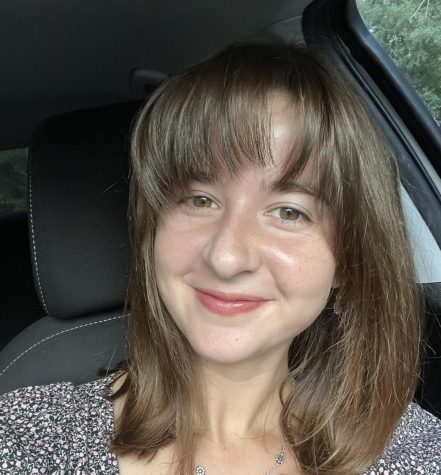
Hi! I am a freshman and my major and minor are undeclared as of now. As an Arts and
Entertainment Reporter, I am passionate about exploring restaurants...
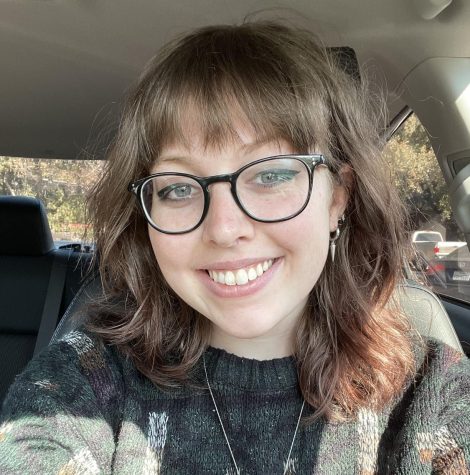
My name is Claire Sammons and I am an Anthropology and Communications double major. I have worked for the Trinitonian since fall of 2020. I became a photographer...

